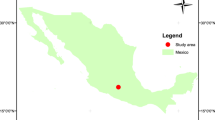Abstract:
Knowledge of groundwater flow from soil or surface water to crystalline bedrock has usually been derived from indirect studies of drawdown in soil due to underground constructions, as well as from analysis of water chemistry and from tracer experiments. Infiltration into the bedrock occurs at specific sites where suitable combinations of geological and hydrological variables exist. Flow from soil to rock in the saturated zone occurs where conductors in the bedrock, such as fractures and fracture zones, are hydraulically connected to a groundwater reservoir in permeable soil or to horizons of permeable and constructive material in heterogeneous soil. Of particular importance for infiltration are the hydraulic conditions of the contact zone between soil and rock. A thin layer of silt on the bedrock surface often blocks the water flow. The micro-topography of the bedrock surface is important since fracture zones usually give depressions in the surface, in which accumulations of sorted and conductive material often can be found. A strong heterogeneity in the infiltration from soil to rock is evidenced by statistical analyses of the flow related to various geological and hydrogeological variables, as well as from analyses of groundwater chemistry and tracer experiments. In order to estimate the infiltration from soil to rock and to carry out mathematical modelling of the groundwater flow, it is necessary to have a good knowledge of the hydraulic conditions of the superficial rock and soil as well as of the conditions at the soil/bedrock contact zone. Information on the saturated flow from soil to rock is essential for calculation of water budgets, for assessments of spread of pollutants and for estimations of leakage into underground constructions.
Résumé:
Les connaissances sur les écoulements souterrains des sols ou des eaux de surface res le substratum cristallin ont été généralement établies par des études indirectes sur le drainage des sols par des constructions souterraines, ainsi que par l'etude du chimisme des eaux et par des expériences de traçage. L'infiltration dans le substratum se produit en des lieux particuliers oè les variables géologiques et hydrologiques possèdent en même temps des valeurs favorables. L'écoulement du sol vers la roche en milieu saturé intervient là où les axes drainant du substratum, tels que les fractures et les zones fracturées, sont hydrauliquement connectés à une nappe dans un sol perméable ou à des horizons de matériel perméable dans un sol hétérogène. Les conditions hydrauliques régnant au contact sol/roche jouent un rôle capital pour l'infiltration. Un fin niveau de silt à la surface du substratum suffit souvent à empêcher l'écoulement. La microtopographie de la surface du substratum est importante, car souvent des zones de fractures produisent des dépressions, où sont fréquemment observées des accumulations de matériel trié et perméable. Une forte hétérogénéité de l'infiltration du sol vers la roche est mise en évidence grâce à des analyses statistiques de différentes variables géologiques et hydrologiques déterminant l'écoulement, ainsi que grâce au chimisme de l'eau souterraine et aux traçages. Les information sur les écoulements en milieu saturé du sol vers la roche sont nécessaires pour calculer les bilans hydriques et la dispersion des polluants et pour estimer les fuites vers les ouvrages souterrains.
Similar content being viewed by others
Author information
Authors and Affiliations
Rights and permissions
About this article
Cite this article
Olofsson, B. Flow Of Groundwater From Soil To Crystalline Rock. HYJO 2, 71–83 (1994). https://doi.org/10.1007/s100400050052
Published:
Issue Date:
DOI: https://doi.org/10.1007/s100400050052




